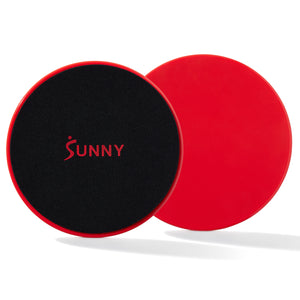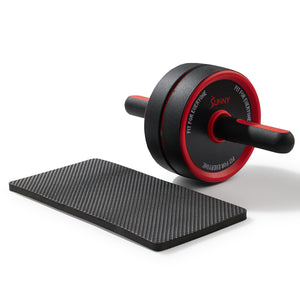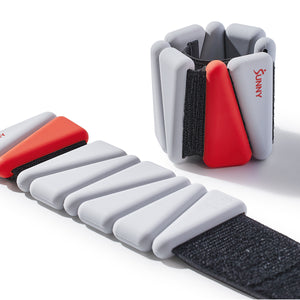Bodyweight workouts are a fantastic way to build strength, endurance, and overall fitness, especially for those who prefer to exercise at home or need a flexible, no-equipment solution. Push-ups, squats, lunges, planks, and burpees are staples of a solid fitness routine, and for a good reason—they can be done anywhere and are effective at working all major muscle groups.
However, as you progress in your fitness journey, you may notice that your bodyweight routine begins to feel a bit easy, or worse, a little boring. To continue seeing improvements and avoid plateaus, it’s essential to ramp up the intensity of your workouts. Thankfully, there are plenty of ways to do this without needing to hit the gym. The key lies in how you manipulate the variables of your training. By using the right tools and tweaking elements like volume, intensity, load, and rest, you can elevate your bodyweight workouts to new heights.
Read on to learn about the different ways to manipulate workout intensity and how adding the right equipment can supercharge your fitness routine. From exercise disks to resistance bands, these tools can help you break through plateaus and get the most out of your bodyweight workouts.
Different Ways to Manipulate Workout Intensity
When you’re looking to level up your bodyweight exercises, the first thing you need to understand is how to adjust the variables of your workout. Some of the variables you might take into consideration include:
- Volume: The total amount of work done in a session (i.e., reps and sets)
- Intensity: How difficult your exercises are and how much effort you’re putting in
- Load: The amount of resistance you’re working against
- Rest: The amount of time you take to recover between sets
We’ll touch on these variables and show you how to use them to boost your bodyweight workouts, as well as recommend the best equipment to help you manipulate each of these elements.
Volume: How Many Reps/Sets You Do
One of the easiest and most straightforward ways to increase workout intensity is by manipulating volume. Volume refers to how many repetitions and sets you perform during a workout. The more reps and sets you do, the greater the total volume of work you’re putting in, which can lead to greater fatigue and muscle growth over time.
How to Increase Volume
- Increase Reps: If you’re comfortable with a specific bodyweight exercise but find it isn’t challenging anymore, simply adding more repetitions can make a big difference. For example, if you’re doing 10 squats and it feels easy, increase to 15 or 20. This will increase the overall time your muscles are under tension, leading to increased muscle endurance and strength.
- Add Sets: Instead of sticking to three sets of 10 reps, try doing four or five sets to increase your overall workload. Adding extra sets is an effective way to build both endurance and strength over time.
- Time Under Tension: You can also manipulate volume by focusing on the duration of each rep. Slow down your movements (especially during the lowering phase) to increase the time your muscles are under tension. This method not only challenges your muscles but also helps to improve control and flexibility.
Using Gear to Help with Volume
- Exercise Disks (NO. 104): Exercise disks (also known as gliders or sliders) are great for increasing the challenge of bodyweight exercises, particularly for lower body moves like lunges, squats, and leg curls. They add an element of instability, forcing you to engage more stabilizing muscles and increasing the volume of work.
- Ab Rollers (NO. 090): An ab roller can significantly boost volume for core exercises. You can increase the number of ab rollouts you do or hold each rollout for a few extra seconds to really intensify the exercise and get more out of each rep.
By simply increasing the reps or sets in your workout, you’re placing a greater demand on your body, which will lead to improvements in strength, endurance, and muscle definition.
Intensity: How Challenging is It?
Another key factor in leveling up your bodyweight workouts is to manipulate the intensity of the exercises. Intensity refers to how challenging the exercise is in relation to your maximum effort. When you work at higher intensity, your body burns more calories, recruits more muscle fibers, and builds strength and endurance more quickly.
How to Increase Intensity
- Speed: The speed at which you perform an exercise can significantly change its intensity. For example, performing a squat with a slow tempo (taking 3-4 seconds to lower and 2 seconds to rise) increases the time under tension and the challenge of the exercise. Alternatively, speeding up exercises like burpees or mountain climbers can increase the cardiovascular challenge.
- AMRAP (As Many Rounds as Possible): The AMRAP format involves completing as many rounds of a series of exercises as you can in a set amount of time, usually 20-30 minutes. This pushes you to perform exercises at a high intensity, maximizing work output in a short period. For instance, you might do a circuit of push-ups, jump squats, and planks, repeating the cycle as many times as possible in 20 minutes.
- EMOM (Every Minute on the Minute): An EMOM workout involves completing a set number of reps at the start of each minute. After finishing your reps, you rest for the remainder of the minute. This is another great way to intensify your workout, as it forces you to work at a high pace while managing fatigue. For example, you might do 10 push-ups, 15 squats, and 10 burpees each minute for 10 minutes.
Using Gear to Increase Intensity
- Exercise Disks (NO. 104): Adding exercise disks or gliders to moves like lunges or push-ups can make them significantly harder. For instance, performing a push-up with your hands or feet on exercise disks increases instability, forcing your core and upper body to work harder to stabilize.
By adding these elements of intensity—whether it’s increasing the speed of your movements or using formats like AMRAP and EMOM—you’ll ensure that your workouts continue to challenge your body, leading to faster progress and improved fitness.
Load: How Much Resistance Are You Working With?
If you want to take your bodyweight workouts to the next level, adding an external load (or resistance) is one of the most effective strategies. While bodyweight exercises are great, adding resistance forces your muscles to work harder, leading to better strength development and hypertrophy (muscle growth).
How to Increase Load
- Resistance Bands: One of the easiest ways to add load to bodyweight exercises is through the use of resistance bands. You can loop bands around your legs, arms, or torso to add tension during squats, lunges, push-ups, and even core exercises like leg raises and ab rollouts. The resistance increases throughout the movement, making each rep harder as you progress.
- Free Weights: This is another simple way to add load to your workout. You can still perform many of the same bodyweight exercises, like squats or lunges, while holding a dumbbell or kettlebell to provide that external resistance.
Using Gear to Increase Load
- Resistance Bands (NO. 089-COMBO): Use resistance bands to make exercises like squats, glute bridges, or even push-ups more challenging. With the added resistance, your muscles will be under greater stress, forcing them to adapt and get stronger.
- Wrist Weights (NO. 103-1, NO. 103-2): Add wrist weights or ankle weights to exercises like lunges, squats, leg raises, or even arm movements like bicep curls to increase the resistance without changing the exercise. This is especially helpful for adding intensity to bodyweight exercises like high knees or mountain climbers.
By increasing load, you’ll be increasing the amount of work your muscles have to do in each workout, leading to better strength and endurance gains over time.
Rest: How Long Are You Resting in Between Sets?
Another crucial variable for manipulating workout intensity is the amount of rest you take between sets. Rest periods can affect both your strength gains and cardiovascular conditioning. Shorter rest periods will keep your heart rate elevated and increase the cardiovascular intensity of the workout, while longer rest periods allow for more muscle recovery, which is ideal for strength-based training.
How to Manipulate Rest
- Shorten Rest Periods: Reducing the amount of rest between sets increases the intensity of your workout. This forces your body to work harder to recover while keeping your heart rate elevated. For a full-body challenge, try limiting rest to 30-60 seconds between sets.
- Active Rest: Instead of resting completely between sets, you can engage in low-intensity activities like marching in place, walking, or light jogging. This keeps your heart rate up and provides a different kind of challenge.
Using Gear to Manipulate Rest
Exercise Disks (NO. 104): During active rest, you can use your exercise disks to engage in low-impact, core-focused movements. For example, doing plank jacks or mountain climbers on the disks will keep your core engaged and your heart rate up while recovering.
Gear Up and Get Going
Leveling up your bodyweight workouts doesn't require a gym membership or an overhaul of your routine. By manipulating variables like volume, intensity, load, and rest, you can continue to make progress and avoid hitting a fitness plateau.
Incorporating tools like exercise disks, ab rollers, resistance bands, and wrist weights can further enhance your bodyweight exercises, making them more challenging and effective. Whether you’re looking to increase the volume of your workout, add intensity, incorporate load, or shorten your rest periods, these small adjustments can make a big difference in achieving your fitness goals.
With the right combination of effort and equipment, your bodyweight workouts will be anything but boring—and you’ll continue seeing real, measurable results. So, grab your gear and get ready to take your fitness to the next level!



























Add Your Name & Email
Please enter your name and email to continue.We won’t display your email publicly.